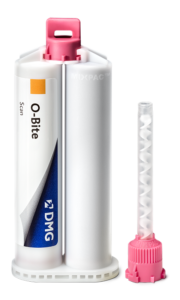by Dr. Elliot Mechanic
Using a dual arch (quad) tray for the impression of a single crown can be just as easy as using an intra-oral scanner. This 3-minute impression technique is predictable and reliable. When performed properly, it is a rare occasion that impressions taken with a quad tray will require any re-takes or re-makes.
- There are many advantages of using a quad impression tray:
- Single impression tray
- Simultaneous bite registration
- Increased patient comfort (eliminates the need for a full mouth of material for a single tooth)
- Decreased cost of materials (an impression is taken of selected teeth only)
- Less time
Case
Here we have a patient with perfect occlusion. The patient is biting in maximum intercuspation with a stable bite and all teeth touching.
To prepare the lower right molar, the quad tray is tried in to ensure that are no interferences (such as wisdom teeth) and can be placed in passably when the patient bites into the tray. This may require a few trials to ensure that the patient is biting correctly. 
In order to achieve a consistent and accurate bite down, a silicone bite registration material is used (O-Bite/DMG). A silicone bite key is made on the opposing side of where the impression is being taken. For example, when making an impression of the lower molar, the silicone bite registration is placed on the other side of the arch. The patient then bites down, creating a wall with the material.
Upon biting, the bite key will guide the teeth in only one way possible in order to close into maximum intercuspation. The use of cheek retractors during the bite registration allows a clear view of proper closing.
The quad tray is then tried on the prepared tooth. Since the patient bites down the same way every time, they are no longer searching for the bite.
The impression is now ready to be taken with a wall-less quad tray using a firm heavy-body impression material. The use of a quad tray without walls prevents the patient from a complete bite down, as the wall may impinge into the gingiva or the roof of the mouth. The heavy-body impression material acts as a thin wall so when the patient bites down there are no interferences, and it’s completely passive.
